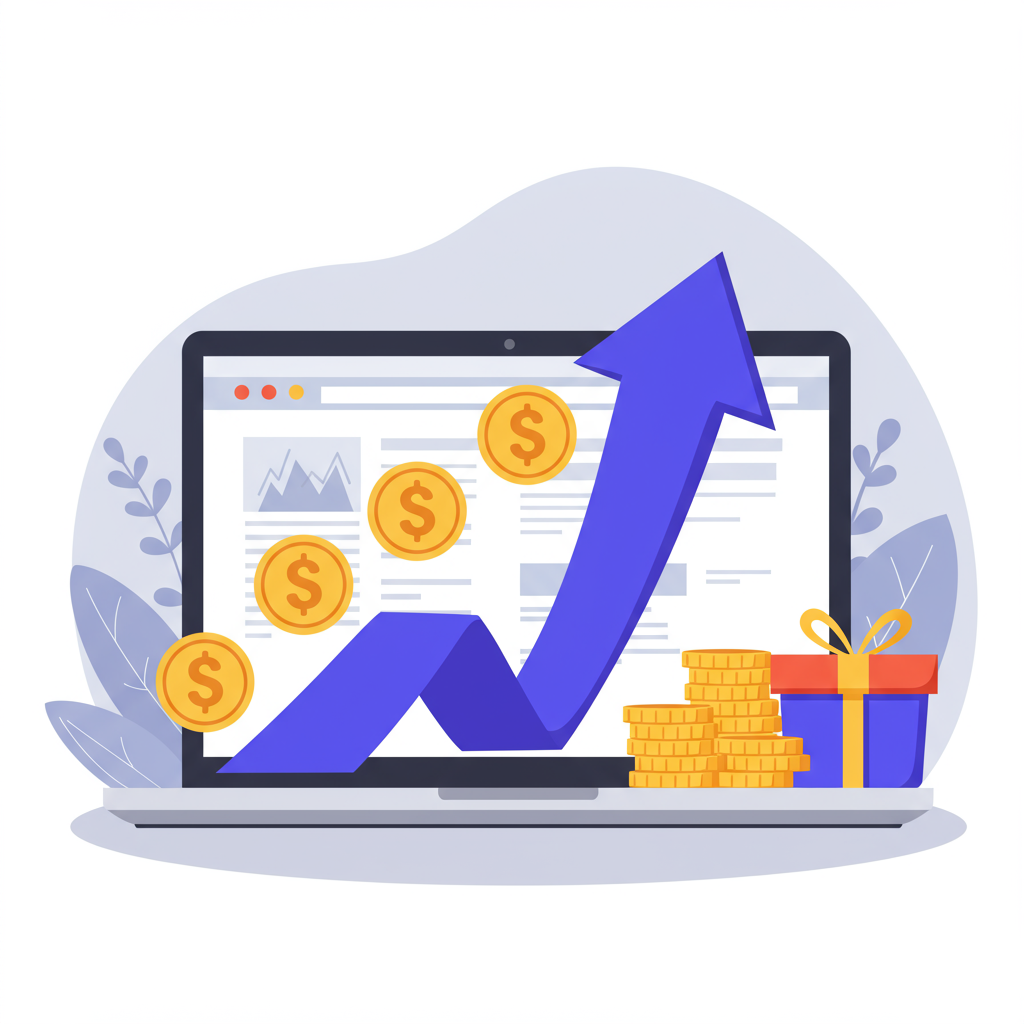Discover how strategic upselling can significantly boost your Average Order Value and enhance customer satisfaction on your Shopify store.
Hello fellow Shopify merchants! I’m here today to talk about a powerful strategy that can significantly boost your store’s revenue and customer satisfaction: upselling.
In the competitive world of e-commerce, simply acquiring customers isn’t enough. We need to maximize the value of each customer interaction.
That’s where upselling comes into play. It’s a technique designed to encourage customers to purchase a more expensive, upgraded, or premium version of a product they are already considering.
Think of it like this: if a customer is looking at a basic smartphone, an upsell would be suggesting the model with more storage, a better camera, or a faster processor.
The goal isn’t to trick customers, but to genuinely offer them a better solution that meets their needs more comprehensively, often leading to greater satisfaction.
Many merchants confuse upselling with cross-selling, so let’s clarify. Cross-selling involves suggesting complementary products.
For instance, if a customer buys a smartphone, cross-selling would be recommending a phone case, screen protector, or headphones.
While both are excellent strategies for increasing Average Order Value (AOV), upselling focuses on *upgrading* the primary purchase, while cross-selling focuses on *adding* related items.
Why is upselling so crucial for your Shopify store? Firstly, it’s often easier to sell more to an existing customer or someone already in the buying funnel than to acquire a new one.
Secondly, upselling directly impacts your Average Order Value (AOV). A higher AOV means more revenue per transaction, improving your bottom line without necessarily increasing traffic.
Thirdly, done correctly, upselling can enhance customer satisfaction. When you present a superior option that truly benefits the customer, they feel you’ve helped them make a better decision.
So, how do we implement effective upsell strategies on Shopify? It starts with understanding your products and your customers deeply.
You need to identify which products naturally lend themselves to an upgrade. What are the ‘better’ versions of your popular items?
Consider offering tiered pricing. For software, this might be basic, pro, and enterprise plans. For physical goods, it could be different material qualities or feature sets.
Personalization is key. Leverage customer data – their browsing history, past purchases, and demographics – to suggest highly relevant upgrades.
Don’t just show a more expensive item; highlight the *value* it provides. Explain the benefits of the upgrade clearly and concisely.
For example, instead of ‘Buy the Pro version for $100 more,’ try ‘Upgrade to Pro for enhanced features and 2x faster performance, ensuring a smoother experience.’
Social proof can be incredibly powerful. If other customers frequently choose the upgraded version, or if it has higher ratings, showcase that.
‘Most popular choice’ or ‘Customers who bought this also upgraded to…’ can be very persuasive.
Bundling can also be a form of upsell. Offer a package deal that includes the premium version of a product along with some valuable add-ons at a slightly discounted combined price.
Timing is everything. The best places for upsell offers are often on the product page itself, in the cart, or even during the checkout process.
Post-purchase upsells, like offering a subscription to a premium service or an extended warranty after the initial purchase, can also be highly effective.
Remember, the goal is to be helpful, not pushy. A subtle, well-placed suggestion is far more effective than an aggressive pop-up that disrupts the shopping experience.
A/B testing is your best friend here. Experiment with different upsell offers, placements, messaging, and pricing to see what resonates most with your audience.
Shopify’s app store is brimming with tools designed specifically for upselling and cross-selling. Apps like ReConvert, OneClickUpsell, or Bold Upsell can automate and optimize this process for you.
Don’t forget to track your results. Monitor your AOV, conversion rates for upsell offers, and overall revenue to understand the impact of your efforts.
What do you think about these strategies? Have you tried any of them in your own Shopify store?
In conclusion, mastering the art of upselling is a game-changer for any Shopify merchant. It’s about providing more value to your customers while simultaneously boosting your store’s profitability.
By focusing on relevance, value, and smart timing, you can turn casual browsers into loyal customers who consistently choose your best offerings.
Start experimenting with these techniques today, and watch your Shopify store thrive!






